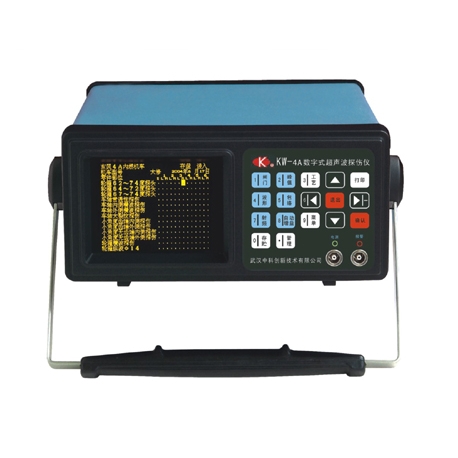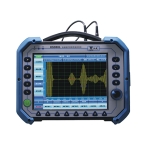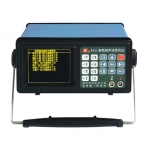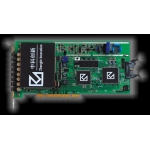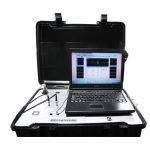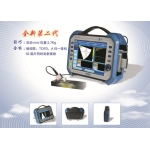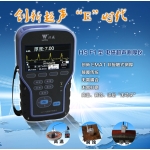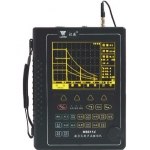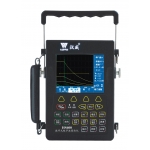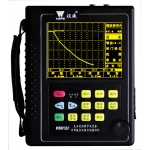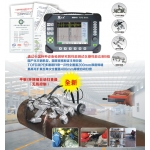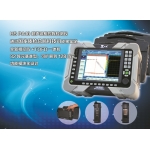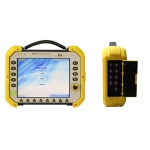Ultrasonic testing
- Products
- Petroleum & Oil Testing
- Tablet Drug Tester
- Refrigeration & Cryogenic
- Life Sciences
- Laboratory
- Spectrometer
- Spray Dryer
- Rotary Evaporator
- Reactor
- Sterilizing & Cleaning
- Water Quality Analyzer
- Chemical Analysis
- Physical Testing
- Centrifuge
- Pathology Equipment
- Optical
- Ultrasonic Homogenizer
- Packaging Testers
- NDT
- Agriculture & Food
- Hazardous Chemical Detection
- Fusion Machine
- Testing Chamber
- Filter Integrity Tester
- Industry Testing Device
- Featured
Digital Ultrasonic Flaw Detector
KW-4A
The ultrasonic flaw detector is a device that can be used for the detection of many flaws in the materials. Flaw detection is an important process that is commonly used for various purposes. The most common use of flaw detection can be seen in various engineering works. The process is commonly employed in the detection of metal surfaces.
- Remove this product from my favorite's list.
- Add this product to my list of favorites.
More info
Performance characters:
Operation interface: using of all Chinese man-machine dialogue method, functional display window and menu operation make it modern and practical.
Process selection: Turn on the detector into instrument test state and press the process selection key to do process selection and select the current using process, and lower left corner of the display will show the use of the process diagram, and the instrument get into process test state, then the flaw detection begins.
Flaw detection process: Set the detection process of testing parts in the instruments in the form of software. When do flaw detection, the instrument automatically call out the process to use.
Flaw detection intelligence: The operator simply needs to connect the probe, press the process selection key to select process. The instrument can automatically call up the corresponding flaw detection process for testing; do not have to adjust the parameters of process control instrument, so the instrument has strong flaw detection intelligence.
Distance compensation: make real-time compensation for long-range flaw detection sensitivity and improve far-range waveform height.
RF expansion: echo within the gate expand in the form of RF display.
Process calibration: Calibrate measure and set the parameters such as sound velocity, incident zero point, refraction angle, probes leading edge, distance volatility curve, and so on.
Peak search: retain the maximum scanned flaw wave in the gate.
Peak envelope: retain the echo peak motion trajectory.
Average noise reduction: use digital signal processing technology to stack echo in multiple times and reduce the random noise.
Detection mode: positive half-wave, negative half-wave, full-wave detection and RF echo.
Storage capacity: can store and playback more than 1000 data waveform images.
Data storage: with testing process and project documents and crack reporting three types of data storage and playback function.
EL display: use electroluminescent flat panel display to meet the wide temperature, anti-vibration, wide viewing angle, high brightness and high contrast. It can response fast and display waveform, menu or positioning values in real time clearly and stably. It has good visibility used in and out of the field, and needs no backlight.
Data communication: The standard LPT two-way communication interface connected with computer to transfer waveform, graphics and files, achieving the computer data management of flaw result
Portable and practical: With AC and DC integrated power, the instrument can work for more than 6 hours in the battery power supply. And with small size, light weight, low power consumption and lightweight, it’s suitable for field testing.
Parameters:
Working mode: single crystal, double crystal
Scanning range: zero interface incident: 0mm ~ 4500mm steel longitudinal wave
Sampling frequency / digit: 100MHz / 8bits
Detection method: full detection
Operating frequency: 2MHz ~ 7.5MHz
Average electrical noise level: ≤ 15% (full scale)
Gain adjustment: 119.5dB (0.5dB step, automatic adjustment)
Sound speed range: 1000 ~ 9999)m / s
Dynamic range: ≥ 28dB
Vertical linearity error: ≤ 4%
Horizontal linearity error: ≤ 1%
Resolution: > 28dB
Sensitivity margin: ≥65dB (deep 200mmΦ2 flat bottom hole)
Digital suppression: 0 ~ 80%, does not affect the linearity and gain
Power supply, voltage: DC 11V ± 10%; AC220V ± 10%
Working time: continuous work for more than 5 hours (lithium battery power supply)
Ambient temperature: -10 ~ 40 ℃ (reference value)
Relative humidity: 20 ~ 95% RH
Dimensions: 300 x 265 x 125 (mm)



